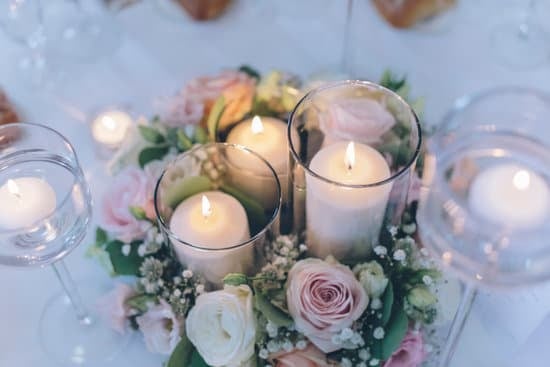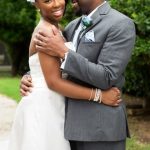Are you wondering which order to wear your engagement, wedding, and anniversary rings? Understanding the significance and traditional order of wearing these rings is important for many people. From the symbolism behind each ring to modern variations in the order, there are various factors to consider when deciding how to wear these meaningful pieces of jewelry.
Wearing engagement, wedding, and anniversary rings holds deep meaning for couples, symbolizing their love, commitment, and milestones in their relationship. The traditional order of wearing these rings has been passed down through generations and varies across different cultures and regions. Additionally, each ring holds its own unique symbolism that contributes to the overall significance of wearing them in a specific order.
In this article, we will explore the traditional order of wearing engagement, wedding, and anniversary rings, as well as delve into the symbolism behind each ring. We will also discuss modern variations and trends in the order of wearing these rings, providing tips for choosing the right style and design for each one. Furthermore, we will examine cultural and regional differences in the order of wearing these rings highlight the significance of wearing all three together.
Additionally, we will cover etiquette and rules for wearing engagement, wedding, and anniversary rings in different situations. By understanding the importance of the order and symbolism behind these rings helps people make informed decisions about how to wear them.
Understanding the Traditional Order of Wearing Engagement, Wedding, and Anniversary Rings
When it comes to wearing engagement, wedding, and anniversary rings, there is a traditional order that is typically followed. The general consensus is that the engagement ring is worn first, followed by the wedding band, and then finally the anniversary ring. This order holds significant symbolism and meaning for each of the rings.
The engagement ring is traditionally worn closest to the heart, on the fourth finger of the left hand. This dates back to an ancient belief that this finger contains a vein that leads directly to the heart, symbolizing love and commitment.
Once the wedding takes place, it is common for the wedding band to be placed on top of the engagement ring. Lastly, on special anniversaries or milestones in a marriage, couples may choose to exchange anniversary rings as a way to commemorate their enduring love and commitment to each other.
Each of these rings carries its own unique symbolism and significance. The engagement ring represents a promise of marriage and eternal love, while the wedding band signifies unity and partnership in marriage. Anniversary rings often symbolize continued commitment and devotion, marking important milestones in a couple’s journey together.
It’s important to note that these traditions may vary based on cultural and regional differences. In some cultures, it might be customary to wear the wedding band first before the engagement ring or even on a different hand altogether. Understanding these variations can help individuals navigate the customs and expectations related to wearing these meaningful pieces of jewelry.
| Ring | Symbolism |
|---|---|
| Engagement Ring | Promise of marriage and eternal love |
| Wedding Band | Unity and partnership in marriage |
| Anniversary Ring | Continued commitment and devotion in marriage |
The Symbolism Behind Each Ring and Its Place in the Order
When it comes to wearing engagement, wedding, and anniversary rings, there is a traditional order that has been followed for generations. Understanding the significance and symbolism behind each ring is essential in knowing the proper order in which they should be worn.
1. Engagement Ring: The engagement ring is typically worn first, closest to the heart. This ring symbolizes the beginning of a lifelong commitment and represents the promise of marriage between two individuals. It is usually given during a proposal and serves as a token of love and commitment.
2. Wedding Ring: Following the engagement ring, the wedding ring is worn next on the same finger. This ring is exchanged during the wedding ceremony and symbolizes the union between two people in marriage. It represents eternal love, fidelity, and unity.
3. Anniversary Ring: The anniversary ring is typically worn last, closest to the fingertips. This ring is often given as a gift to commemorate a milestone anniversary, such as 5th, 10th, or 20th anniversaries. It serves as a reminder of enduring love and commitment throughout the years of marriage.
Modern variations and trends have emerged in recent years regarding the order in which these rings are worn. Some individuals choose to stack all three rings on one finger, while others may wear them on different fingers or hands. Despite these variations, understanding the traditional order and symbolism behind each ring can help couples make an informed decision about how they choose to wear their rings.
Modern Variations and Trends in the Order of Wearing These Rings
When it comes to the order of wearing engagement, wedding, and anniversary rings, there are traditional customs that dictate the placement of each ring on the finger. However, modern variations and trends have emerged that offer more flexibility and personalization in how these rings are worn. Below are some modern variations and trends in the order of wearing engagement, wedding, and anniversary rings:
- Stacking: A popular trend nowadays is to stack all three rings on the same finger. Some may wear the engagement ring at the bottom, followed by the wedding band, and then the anniversary ring on top.
- Separate fingers: Another trend is to wear each ring on a different finger. Some individuals choose to wear their engagement ring on their left hand, the wedding band on their right hand, and the anniversary ring on either hand.
- Mixing metals: It has become fashionable to mix different metal colors when wearing these rings. For example, someone may wear a gold engagement ring, a rose gold wedding band, and a silver anniversary ring.
These modern variations provide individuals with the opportunity to express their unique style and personality through how they wear their engagement, wedding, and anniversary rings. Whether following tradition or embracing contemporary trends, it ultimately comes down to personal preference.
In addition to these modern variations in wearing these rings, there are cultural and regional influences that also impact how they are worn. Understanding these factors can provide further insight into the significance of wearing these meaningful pieces of jewelry.
Tips for Choosing the Right Style and Design for Each Ring
When it comes to choosing the right style and design for each ring, there are a few key factors to consider. First and foremost, it’s important to think about your personal style and preferences. Your engagement, wedding, and anniversary rings are a reflection of your individual taste and should complement your overall look.
Another consideration is the practicality of each ring. For example, if you lead an active lifestyle or work with your hands frequently, you may want to opt for a more durable and low-profile design for your engagement ring. On the other hand, your wedding band may be worn every day, so it’s essential to choose a style that is comfortable and practical for everyday wear.
It’s also important to think about how each ring will look when worn together. Many couples choose to select rings that are designed to be worn as a set, ensuring that they complement each other in terms of style, metal color, and design elements. However, there are no hard and fast rules when it comes to wearing these rings together – some individuals prefer a more eclectic mix of styles which can also be quite striking.
Ultimately, the decision on the style and design of each ring should be based on what feels right for you as a couple. Whether you opt for traditional matching sets or unique individual designs, the most important thing is that the rings hold personal significance for you both.
| Tips for Choosing | Right Style and Design |
|---|---|
| Consider personal style | Choose practical designs |
| Think about how rings will look together | Personal significance is key |
Cultural and Regional Differences in the Order of Wearing These Rings
When it comes to wearing engagement, wedding, and anniversary rings, the order may vary based on cultural and regional differences. These variations can be influenced by historical customs, religious beliefs, or even family traditions. Understanding these differences can help individuals navigate the etiquette and symbolism associated with these important pieces of jewelry.
Traditional Cultural Practices
In many Western cultures, the traditional order of wearing engagement, wedding, and anniversary rings is fairly consistent: the engagement ring is worn first, followed by the wedding band, and finally the anniversary ring. However, in some cultures such as those in Eastern Europe and South America, it is common for the wedding band to be worn on the right hand instead of the left.
In some Middle Eastern countries, women may wear their wedding bands on their right hand until after the wedding ceremony has taken place.
Regional Variations
Even within a single country or region, there can be variations in how engagement, wedding, and anniversary rings are worn. For example, in parts of India, it is customary for women to wear their engagement and wedding rings on their left hand while men wear theirs on their right hand. In certain regions of China, couples may not exchange wedding bands at all but opt for other forms of symbolic jewelry.
Personal Interpretation
In addition to cultural and regional differences, individuals may choose to wear their rings in a specific order that holds personal significance to them. This could be influenced by family traditions or personal beliefs that prioritize one ring over another. Understanding these variations can help individuals appreciate the rich tapestry of customs and practices surrounding these significant milestones in life.
Significance of Wearing All Three Rings Together
Wearing all three rings together – the engagement ring, wedding ring, and anniversary ring, holds a significant value for many couples. This tradition represents the journey of love and commitment throughout the years of marriage. Understanding the significance behind wearing them together is essential for couples who wish to honor their relationship milestones.
Symbolism of Wearing All Three Rings Together
Each ring symbolizes a different stage in a couple’s relationship. The engagement ring represents the promise of commitment and devotion to one another. The wedding ring signifies the union and lifelong partnership formed through marriage. Lastly, the anniversary ring celebrates the enduring love and dedication shared by the couple through each passing year.
Modern Variations and Trends
While tradition dictates that engagement rings are worn first, followed by the wedding band, and then the anniversary band, modern variations have emerged. Some couples choose to stack all three rings on one finger, creating a stylish and meaningful combination. Others opt to wear their engagement ring on their right hand or necklaces after getting married but before exchanging anniversary bands during milestone celebrations.
By understanding the symbolism behind each ring and its place in the order, couples can make informed choices about how they wish to wear their engagement, wedding, and anniversary rings. Whether following traditional customs or embracing modern trends, wearing these rings together serves as a constant reminder of enduring love and commitment.
Etiquette and Rules for Wearing Engagement, Wedding, and Anniversary Rings in Different Situations
When it comes to wearing engagement, wedding, and anniversary rings, it is important to understand the etiquette and rules for wearing these rings in different situations. The order in which these rings are worn holds significant meaning and understanding the proper etiquette is essential.
In most traditional Western cultures, the engagement ring is typically worn first, followed by the wedding band, and then the anniversary ring. The engagement ring is meant to be a symbol of a promise of marriage, which is why it is traditionally worn first.
The wedding band symbolizes the commitment made during the marriage ceremony and is placed on the finger after the vows are exchanged. The anniversary ring is usually given as a gift to commemorate a milestone in the marriage, such as a significant wedding anniversary or the birth of a child.
However, there may be variations in this order based on cultural or personal preferences. Some individuals may choose to wear their wedding band first followed by their engagement ring, while others may opt to stack all three rings on one finger. Additionally, modern trends have also seen an increase in personalized styles that deviate from the traditional order.
When it comes to specific situations such as formal events or professional settings, it is generally recommended to wear only the wedding band and not the engagement ring if you are already married. This ensures that there is no confusion about your marital status. However, some individuals may choose to wear both rings together as a personal preference. Understanding these nuances in etiquette can help individuals navigate various social settings with confidence when it comes to wearing these meaningful rings.
Conclusion
In conclusion, understanding the traditional order and symbolism behind engagement, wedding, and anniversary rings holds great significance in many cultures and societies. The placement of these rings on the finger carries with it deep meaning and represents different stages of commitment and love within a relationship. Whether it’s following the traditional order of wearing the rings or adapting to modern variations and trends, each ring symbolizes a special milestone in a couple’s journey together.
Furthermore, as couples navigate through cultural and regional differences in the order of wearing these rings, it’s important to remember that there is no one-size-fits-all approach. Different customs and traditions may dictate unique ways of wearing these rings, showcasing the diverse ways in which love is celebrated around the world.
In addition, wearing all three rings together not only signifies the ongoing commitment between partners but also serves as a beautiful reminder of their love story. Ultimately, understanding the etiquette and rules for wearing engagement, wedding.
and anniversary rings in different situations can help to ensure that these precious symbols are honored and cherished for years to come.
Frequently Asked Questions
What Order Do You Wear Wedding and Anniversary Rings?
Wedding and anniversary rings are typically worn on the ring finger of the left hand, with the wedding band being closest to the heart. The anniversary ring can be worn closer to the tip of the finger.
Which Ring Goes on First Engagement or Wedding?
The engagement ring is traditionally worn first, followed by the wedding band. This symbolizes that the commitment of marriage comes after the commitment of engagement.
Which Order Should Rings Be Worn?
The correct order for wearing rings is typically engagement ring first, followed by the wedding band, and then any subsequent anniversary rings. This order symbolizes the progression of commitment in a relationship.

I have been involved in marriages for over 20 years helping couples and singles understand more about them.





